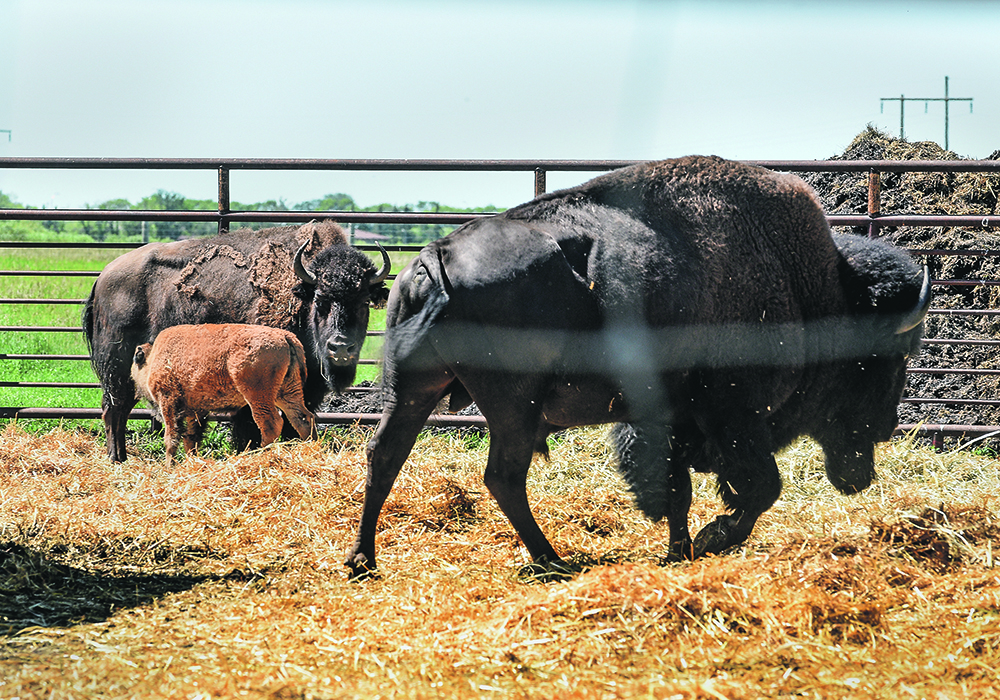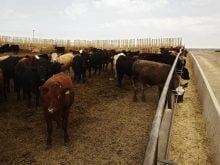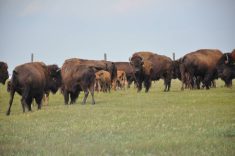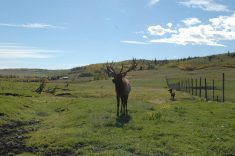Reverse psychology isn’t reserved for human animals.
It’s a technique Whit Hibbard also practices and promotes for low-stress handling of bovines, particularly bison.
“When it comes to working livestock, do the opposite of what we’d normally do and it would probably be the right thing,” he said during the recent International Bison Convention in Saskatoon.
“Low-stress bison handling is based on communication (through proper technique), not coercion,” said Hibbard, a fourth generation Montana cattle rancher and bison-handling specialist with four decades of experience.
Read Also

Trump’s tariffs take their toll on U.S. producers
U.S. farmers say Trump’s tariffs have been devastating for growers in that country.
At his family’s ranch, Hibbard participated in a major shift from conventional to low-stress cattle handling. Now he applies it to bison.
“We work with them mentally instead of just physically. That creates an ethical and humane method of working animals.
“Conventional animal handling is none of those things. It’s not animal or livestock centred, it’s people centred. For a lot of years, I handled animals conventionally…. All we did was basically make unwilling animals do what we wanted them to do using fear, force and other types of coercion.”
Since 2012, he has been teaching clinics and consulting in the United States and Canada, most recently focused on bison handling in conjunction with Parks Canada, the U.S. National Park Service, the U.S. Fish and Wildlife Service, Turner Ranches, which operates in many states, and Rancho El Uno in Mexico.
“I would estimate that in the Northern Hemisphere, approximately 90 percent of the bison now are handled in a low-stress fashion.”
He credits the late Bud Williams for many of the ideas and techniques on how to work animals effectively and efficiently beyond conventional norms.
Williams coined the bison-handling golden rule, said Hibbard: “The most important factor is not how many we can work in a day, but how well we can work them.”
Williams helped develop the guiding principles and techniques that can have a profound difference in how animals are handled, which makes it easier and safer on them as well as the handlers.
“The basic rule is that the better the handling, the better the performance in terms of weight gains, conception rates and immune function will be. And the converse is true,” said Hibbard.
As an example, five years ago at every fall roundup at Elk Island National Park, about 20 bison in a herd of 450 would die from mishandling. That has fallen to zero mortality after a half-day of supervised training and practice.
“So, what changed? Not the corral. Same bison. It’s how we handled the bison. It’s all about the people,” said Hibbard.
“We doubled the processing rate with a lot less stress on animals and a lot less stress on the people and safety, certainly.
“It’s really fun to work bison like this, and it doesn’t cost anything except a change in human thinking and behaviour.
“But for some, that’s the hard part. It was for me. I resisted retooling for 20 years, but now I consider that 20 years wasted.”
The principles of low-stress bison handling include the following:
- Keep animals in a normal frame of mind.
- Animals should not be forced to do anything they don’t want to do or are not ready to do.
- Use the animals’ natural instincts; set up every situation so the handler’s idea becomes the animals’ idea.
- Animals want to avoid pressure and need to experience release from pressure.
- Animals want to see what’s pressuring them.
- Animals want to see where the handler wants them to go.
- Animals want to move past or around handlers.
- Under excess pressure, animals want to go back in the direction they came.
Hibbard said many people want to learn a few new techniques, but low-stress handling starts with a mindset.
“What we’re really talking about is a paradigm shift here in how we handle animals and that starts in our own head. It starts with a concern about how we handle the animals and what we really need to do is think in terms of handling our animals properly.”
Through his consulting work and the online Stockmanship Journal that he edits and publishes, Hibbard is trying to dispel common beliefs about moving bison and substituting them with low-stress beliefs and techniques.
One misconception is that it takes a lot of help to work bison, but less assistance is better.
According to conventional thinking, the best way to move bison is to push from the rear versus low-stress handling of pushing from the front and sides.
Another conventional belief is that mechanical solutions like hydraulic sweeps are better at handling problems, but the low stress belief is to use behavioural solutions.
It’s also thought that storing or stacking bison in a facility is faster, but it’s actually slower because bison become confused, resistant and interrupt their forward momentum.
“To think in terms of working with them psychologically instead of physically and moving their minds instead of just their bodies and getting them to understand what we want them to do… then it’s a win-win,” said Hibbard. “They get to do what they want, and they’re doing what we want.
“In other words, we make our idea their idea.”
















